The former police station has been a local landmark in New Malden since the early 1890s. Built to police the fast-developing town, it opened in 1892, complete with a covered parade ground, cells and a measuring rack for prisoners. The local headquarters, however, were in nearby Kingston, where the first police station had been built in 1825. Known as ‘the Watch House’, it provided a meeting place for the borough’s watchmen and was abandoned when the area became part of the Metropolitan Police District in 1840.
Photographs and text about New Malden.
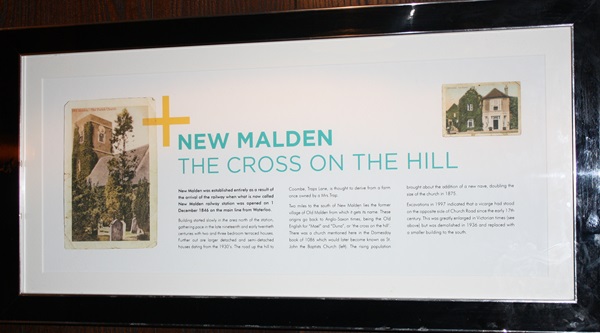
The text reads: New Malden was established entirely as a result of the arrival of the railway when what is now called New Malden railway station was opened on 1 December 1846 on the main line from Waterloo. Building started slowly in the area north of the station, gathering pace in the late nineteenth and early twentieth centuries with two and three bedroom terraced houses.
Further out are larger detached and semi-detached houses dating from the 1930's. The road up the hill to Coombe, Traps Lane, is thought to derive from a farm once owned by a Mrs Trap.
Two miles to the south of New Malden lies the former village of Old Malden from which it gets its name. These origins go back to Anglo-Saxon times, being the Old English for "Mael" and "Duna", or ‘the cross on the hill'. There was a church mentioned here in the Domesday book of 1086 which would later become known as St John the Baptists Church (left). The rising population brought about the addition of a new nave, doubling the size of the church in 1875.
Excavations in 1997 indicated that a vicarage had stood on the opposite side of Church Road since the early 17th century. This was greatly enlarged in Victorian times (see above) but was demolished in 1936 and replaced with a smaller building to the south.
Photographs and text about faith in the community.
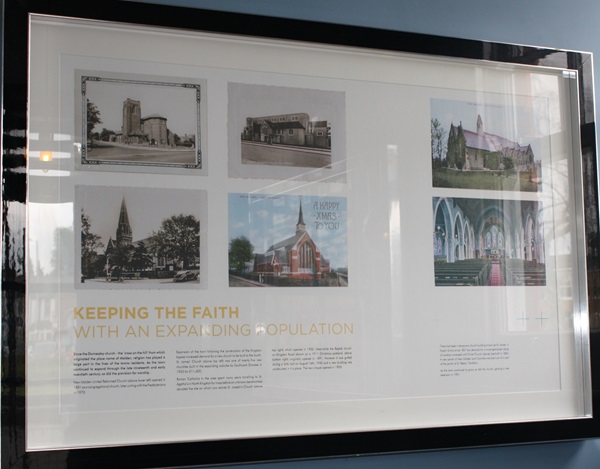
The text reads: Since the Doomsday church – the ‘cross on the hill’ from which originated the place name of Malden, religion has played a large part in the lives of the town’s residents. As the town continued to expand through the late nineteenth and early twentieth century, so did the provision for worship.
New Malden United Reformed Church (above lower left) opened in 1881 as a congregational church, later uniting with the Presbyterians in 1972.
Expansion of the town following the construction of the Kingston bypass increased demand for a new church to be built to the South. St James’ Church (above top left) was one of twenty five new churches built in the expanding suburbs by Southwark Diocese in 1933 for £11,600.
Roman Catholics in the area spent many years travelling to St Agatha’s in North Kingston for mass before an unknown benefactress donated the site on which now stands St Joseph’s Church (above top right) which opened in 1922. Meanwhile the Baptist church on Kingston Road (shown on a 1911 Christmas postcard, above bottom right) originally opened in 1891. However it was gutted during a blitz raid on August 16, 1940 and a new building was constructed in its place. The new chapel opened in 1953.
Photographs and text about The Blitz.
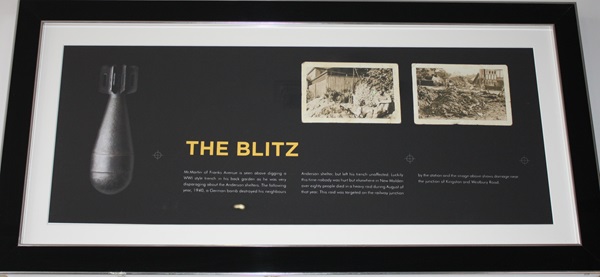
The text reads: Mr Martin of Franks avenue is seen above digging a WW1 style trench in his back garden as he was very disparaging about the Anderson shelter. The following year, 1940, a German bomb destroyed his neighbours Anderson shelter, but left his trench unaffected. Luckily this time nobody was hurt but elsewhere in New Malden over eighty people died in a heavy raid during August of that year. This raid was targeted on the railway junction by the station and the image above shows damage near the junction of Kingston and Westbury Road.
Photographs and text about the New Malden bombings, August 1940.
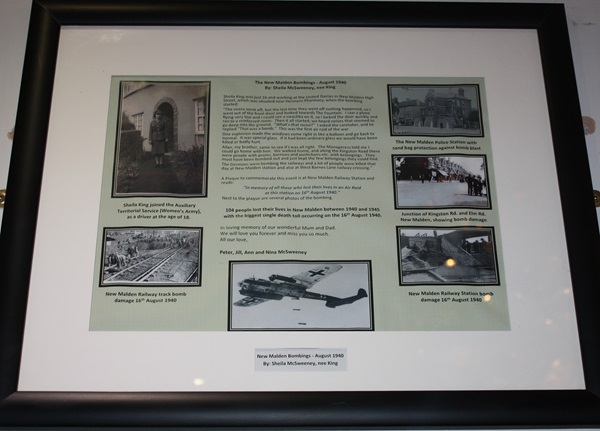
The text reads: The New Malden Bombings - August 1940
By: Sheila McSweeney, nee King
Sheila King was just 16 and working at the United Dairies in New Malden High Street, which was near Hermans Pharmacy, when the bombing started.
"The sirens went off, but the last time they went off nothing happened, so I went out of the door and looked towards The Fountain. I saw a plane flying very low and I could see a swastika so I locked the door quickly and ran to a reinforced room. Then it a all started; we heard noises that seemed to go deep into the ground.
"What's that noise?" I asked the caretaker, and he replied "That was a bomb". This was the first air raid of the war.
One explosion made the windows come right in like a balloon and go back to normal. It was special glass. If it had been ordinary glass we would have been killed or badly hurt.
Allan, my brother, came to see if I was all right. The Manageress told me I could go home with him. We walked home, and along the Kingston Road there were people with prams, barrows and pushchairs etc. with belongings. They could must have been bombed out and just kept the few of belongings they could find.
The Germans were bombing the railways and a lot of people were killed that day at New Malden station and also at West Barnes Lane railway crossing"
A Plaque to commemorate this event is at New Malden Railway station and reads:
"In memory of all those who lost their lives in an Air Raid at this station on 16 August 1940”.
Next to the plaque are several photos of the bombing.
104 people lost their lives in New Malden between 1940 and 1945 with the biggest single death toll occurring on the 16 August 1940.
In loving memory of our wonderful Mum and Dad. We will love you forever and miss you so much.
All our love,
Peter, Jill, Ann and Nina McSweeney.
A photograph and text about New Malden Tramways.
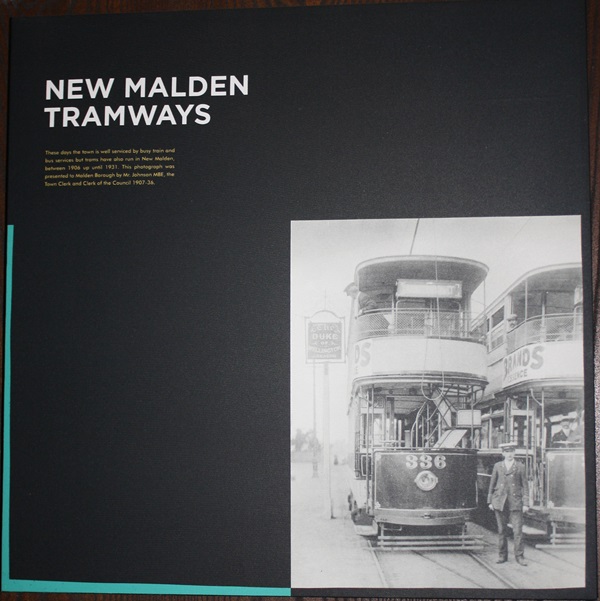
The text reads: These days the town is well serviced by busy train and bus services but trams have also run in New Malden, between 1906 up until 1931. This photograph was presented to Malden Borough by Mr Johnson MBE, the Town Clerk and Clerk of the Council 1907-36.
A photograph and text about the Odeon & Decca Records.
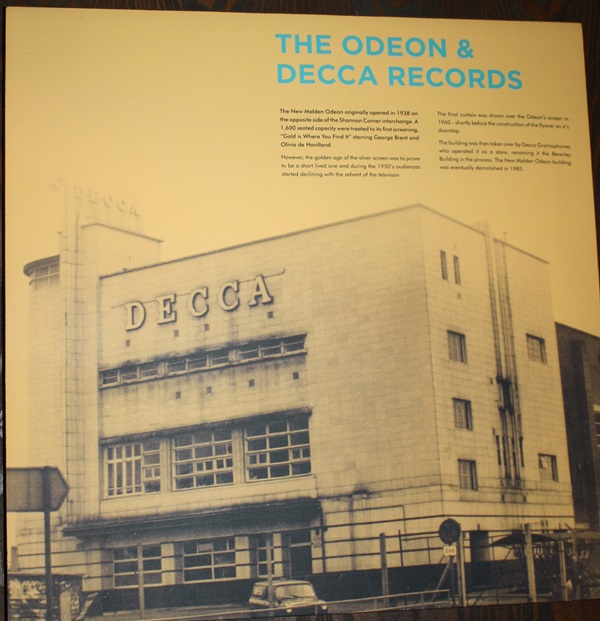
The text reads: The New Malden Odeon originally opened in 1938 on the opposite side of the Shannon Corner interchange. A 1,600 seated capacity were treated to its first screening, "Gold is Where You Find It" starring George Brent and Olivia de Havilland.
However, the golden age of the silver screen was to prove to be a short lived one and during the 1950's audiences started declining with the advent of the television.
The final curtain was drawn over the Odeon’s screen in 1960 shortly before the construction of the flyover on its doorstep.
The building was then taken over by Decco Gramophones who operated it as a store, renaming it the Beverley Building in the process. The New Malden Odeon building was eventually demolished in 1985.
A photograph and text about Dame Diana Rigg.
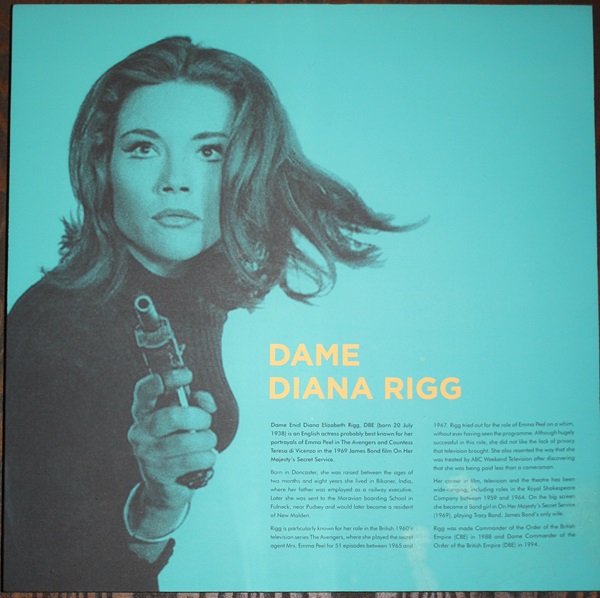
The text reads: Dame Enid Diana Elizabeth Rigg, DBE (born 20 July 1938) is an English actress probably best known for her portrayals of Emma Peel in The Avengers and Countess Teresa di Vicenzo in the 1969 James Bond film On Her Majesty's Secret Service.
Born in Doncaster, she was raised between the ages of two months and eight years she lived in Bikaner, India where her father was employed as a railway executive. Later she was sent to the Moravian boarding School in Fulnek, near Pudsey and would later become a resident of New Malden.
Rigg is particularly known for her role in the British 1960's television series The Avengers, where she played the secret agent Mrs Emma Peel for 51 episodes between 1965 and 1967. Rigg tried out for the role of Emma Peel on a whim, without ever having seen the programme. Although hugely successful in this role, she did not like the lack of privacy that television brought. She also resented the way that she was treated by ABC Weekend Television after discovering that she was being paid less than a cameraman.
Her career in film, television and the theatre has been wide-ranging, including roles in the Royal Shakespeare Company between 1959 and 1964. On the big screen she became a Bond girl in On Her Majesty's Secret Service (1969), playing Tracy Bond, James Bond's only wife.
Rigg was made Commander of the Order of the British Empire (CBE) in 1988 and Dome Commander of the Order of the British Empire (DBE) in 1994.
A photograph and text about the Fountain Roundabout.
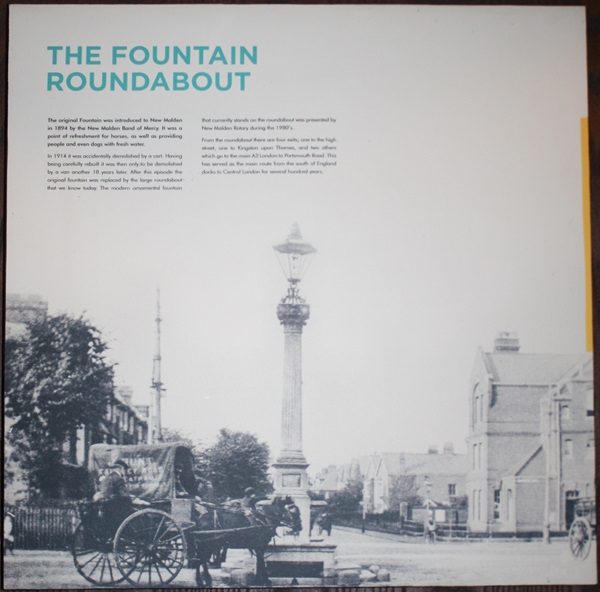
The text reads: The original Fountain was introduced to New Malden in 1894 by the New Malden Band of Mercy. It was a point of refreshment for horses, as well as providing people and even dogs with fresh water.
In 1914 it was accidentally demolished by a cart. Having being carefully rebuilt it was then only to be demolished by a van another 18 years later. After this episode the original fountain was replaced by the large roundabout that we know today. The modern ornamental fountain that currently stands on the roundabout was presented by New Malden Rotary during the 1980's.
From the roundabout there are four exits; one to the high street, one to Kingston upon Thames, and two others which go to the main A3 London to Portsmouth Road. This has served as the main route from the south of England docks to Central London for several hundred years.
A photograph and text about New Malden police force in 1910.
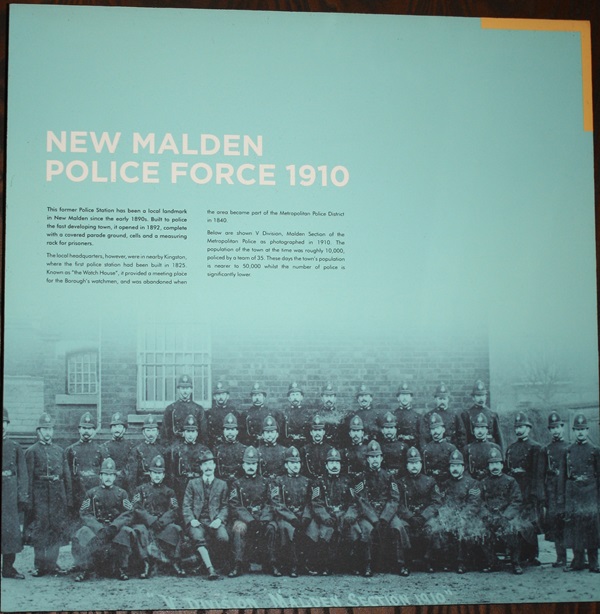
The text reads: This former Police Station has been a local landmark in New Malden since the early 1890s. Built to police the fast developing town, it opened in 1892, complete with a covered parade ground, cells and a measuring rack for prisoners.
The local headquarters, however, were in nearby Kingston, where the first police station had been built in 1825. Known as "the Watch House", it provided a meeting place for the Borough's watchmen, and was abandoned when the area became part of the Metropolitan Police District in 1840.
Below are shown V Division, Malden Section of the Metropolitan Police as photographed in 1910. The population of the town at the time was roughly 10,000, policed by a team of 35. These days the town's population is nearer to 50,000 whilst the number of police is significantly lower.
A photograph and text about John Martyn OBE.
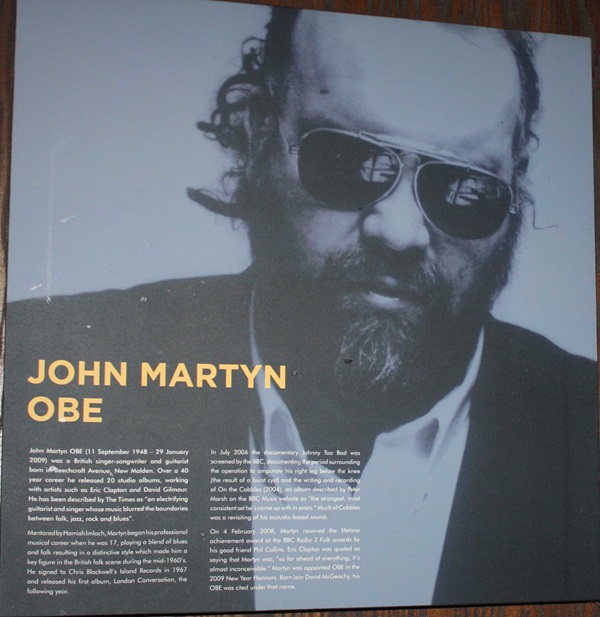
The text reads: John Martyn OBE (1 September 1948-29 January 2009) was a British singer-songwriter and guitarist born in Beechcroft Avenue, New Malden. Over a 40 year career he released 20 studio albums, working with artists such as Eric Clapton and David Gilmour. He has been described by The Times as "an electrifying guitarist and singer whose music blurred the boundaries between folk, jazz, rock and blues”.
Mentored by Hamish Imlach, Martyn began his professional musical career when he was 17, playing a blend of blues and folk resulting in a distinctive style which made him a key figure in the British folk scene during the mid-1960s. He signed to Chris Blackwell's lsland Records in 1967 and released his first album, London Conversation, the following year.
In July 2006 the documentary Johnny Too Bad was screened by the BBC, documenting the period surrounding the operation to amputate his right leg below the knee (the result of a burst cyst) and the writing and recording of On the Cobbles (2004), an album described by Peter
Marsh on the BBC Music website as "the strongest, most consistent set he's come up with in years." Much of Cobbles was a revisiting of his acoustic-based sound.
On 4 February 2008, Martyn received the lifetime achievement award at the BBC Radio 2 Folk awards by his good friend Phil Collins. Eric Clapton was quoted as saying that Martyn was, “so far ahead of everything, it's almost inconceivable," Martyn was appointed OBE in the 2009 New Year Honours. Born loin David McGeachy, his OBE was cited under that name.
A photograph of Old Malden Lane, c1930.
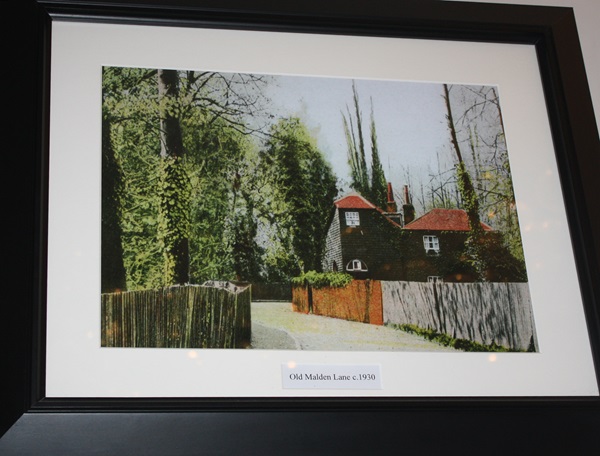
A photograph of Woodfield, c1920.
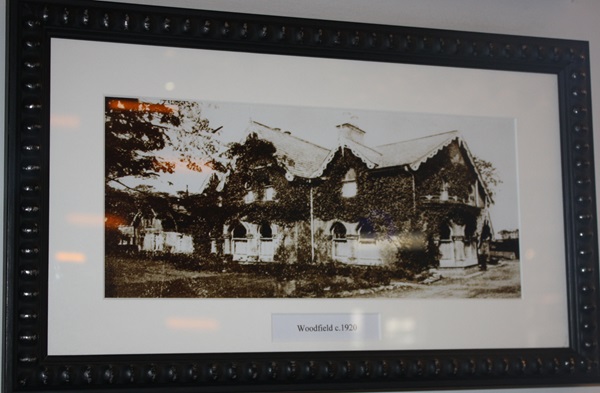
A photograph of Telegraph Cottage, c1920.
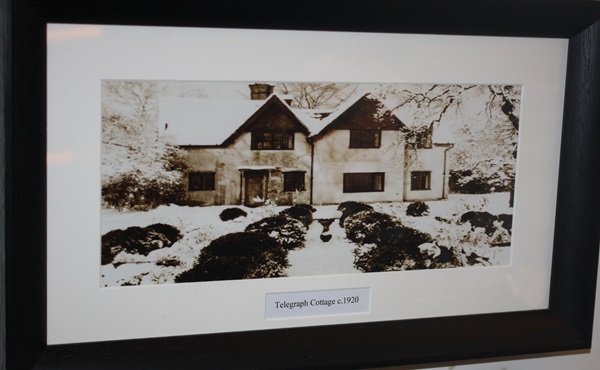
A photograph of Alric Avenue, c1935.
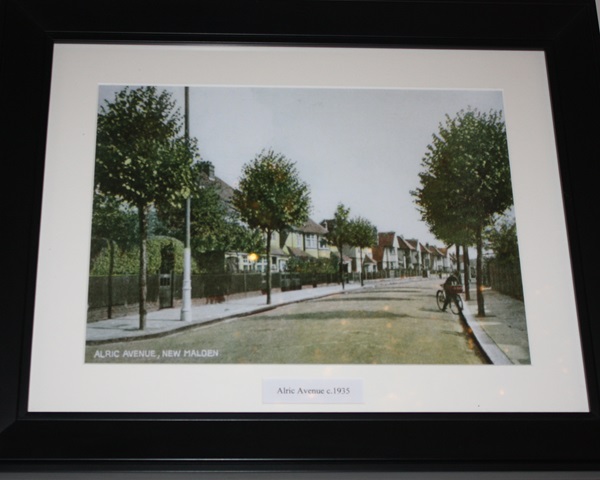
A photograph of The Roundabout, 1960.
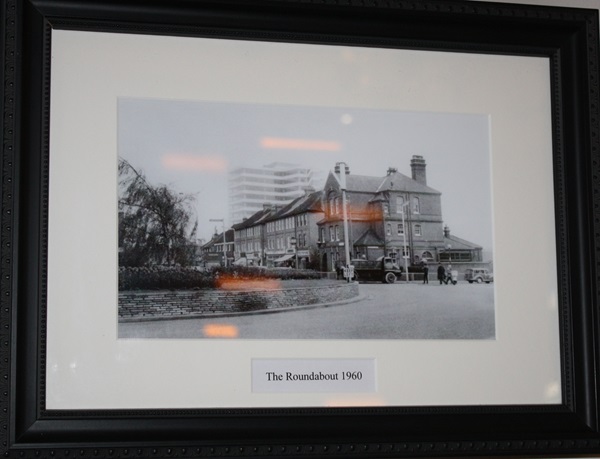
A photograph of Malden Road, 1960.
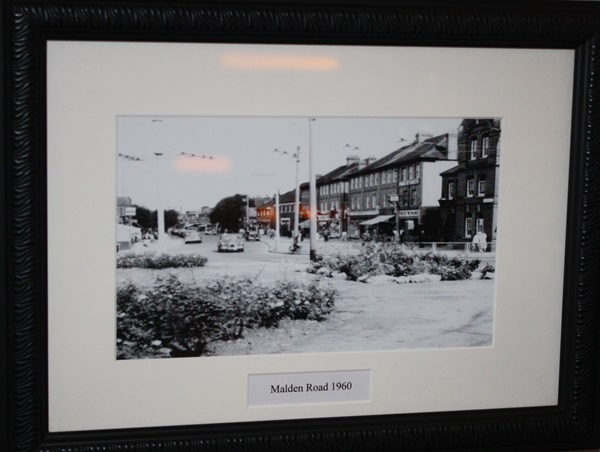
A photograph of the New Malden Home Guard “Dads Army”.
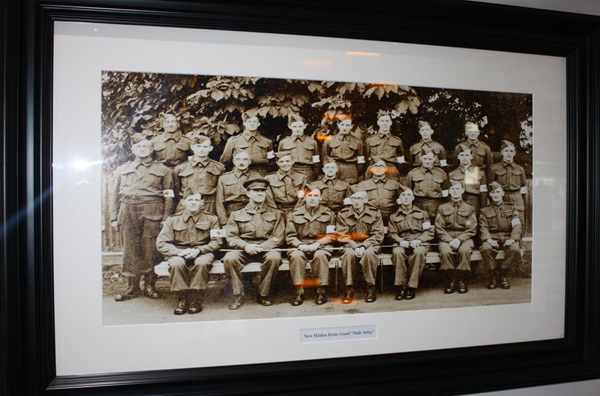
A photograph of Hoppingwood Farm, c1925.
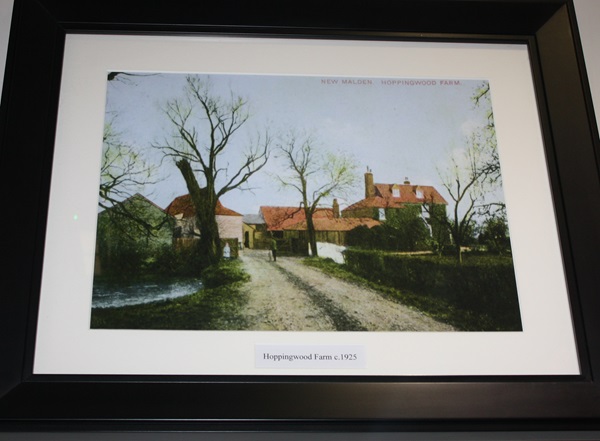
A photograph of Burlington Road.
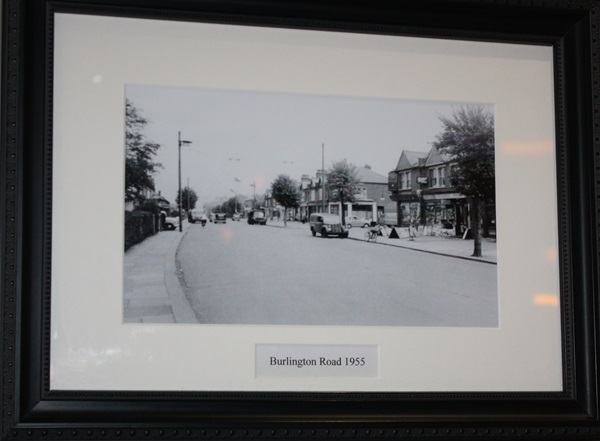
A photograph of High Street, 1955.
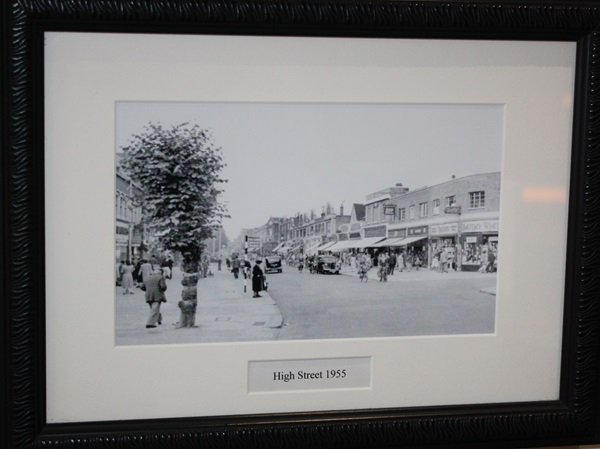
A photograph of Malden College, c1920.
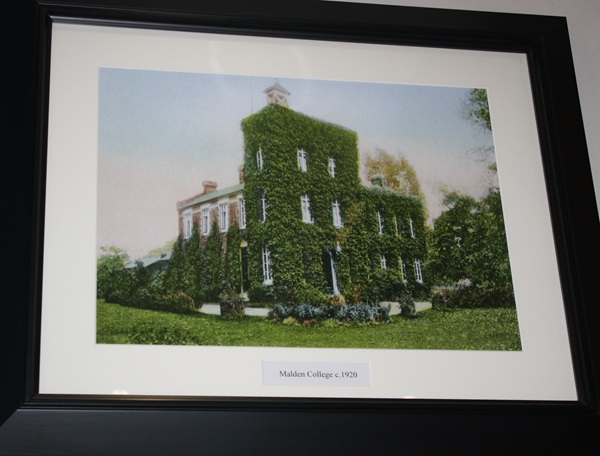
A photograph of Red Cross Hospital, c1920.
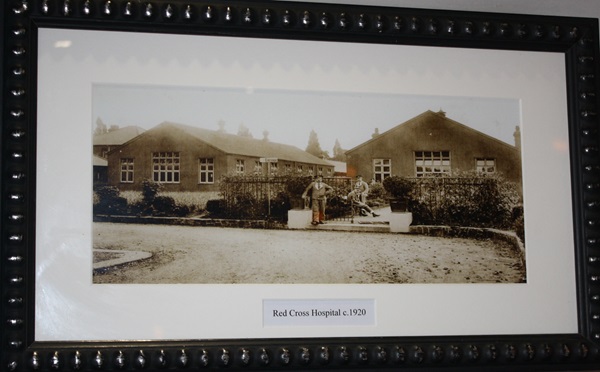
A photograph of Municipal Offices, c1950.
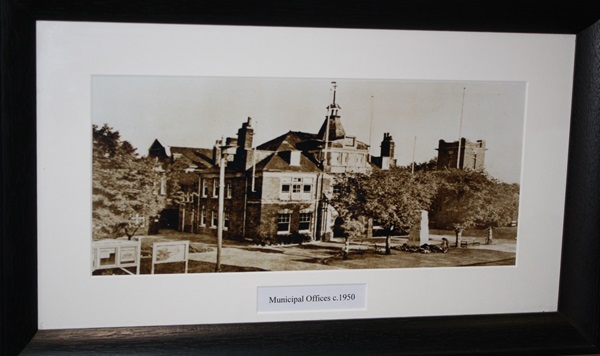
An acrylic painting entitled New Malden Night, by Gavin Mundy.
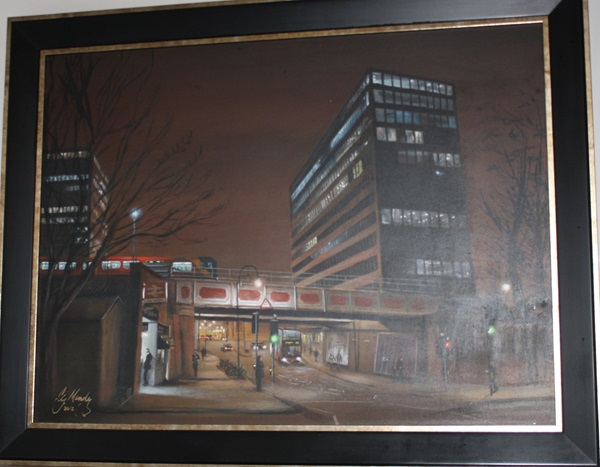
I am a visual artist, living and working in Surrey. I am intrigued by light, texture and pattern. I was delighted to have been asked to produce this piece for The Watchman which captures a scene of New Malden at night.
A sculpture entitled Circles of Sound, by David Undery.
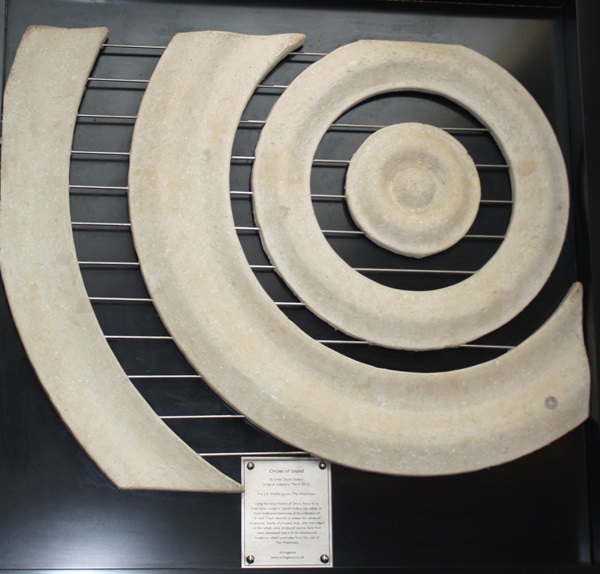
Using the local history of Decca Records as inspiration, sculptor David Undery has called on fond childhood memories of his collection of 12 and 7 inch records to create this series of sculptures. Stacks of pressed vinyl, with fine-ridged circles which once produced sound, have now been translated into a three-dimensional sculpture which protrudes from the wall of The Watchman.
External photograph of the building – main entrance.
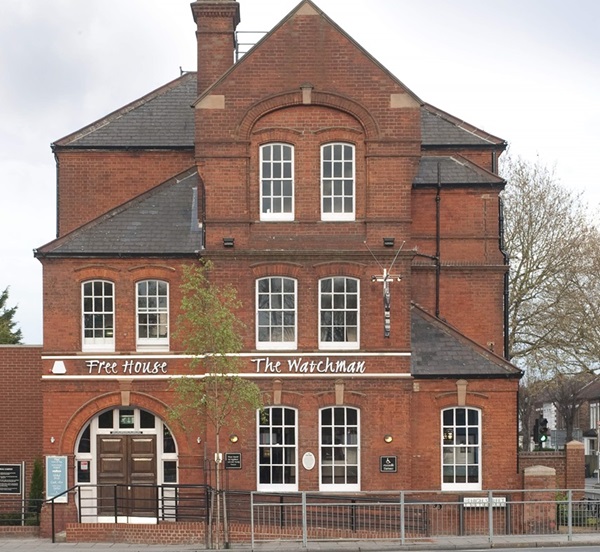
Extract from Wetherspoon News Summer 2018.
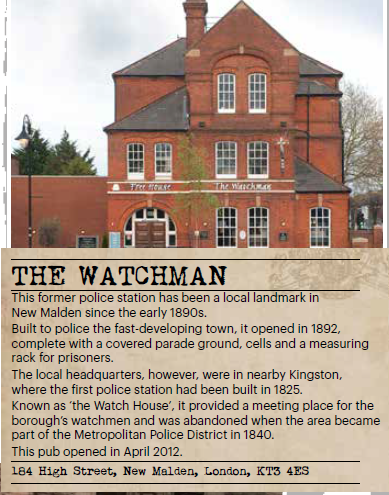
If you have information on the history of this pub, then we’d like you to share it with us. Please e-mail all information to: pubhistories@jdwetherspoon.co.uk